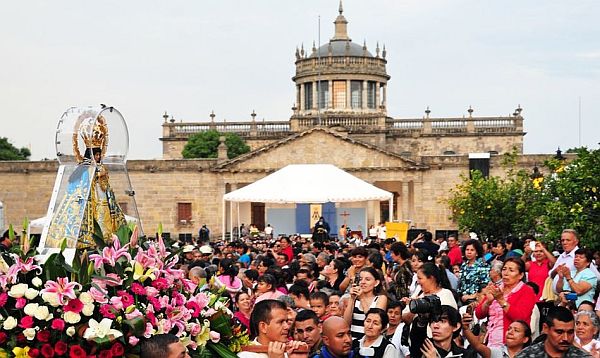Jalisco, Mexico - The Romería of the Virgin of Zapopan is one of the most important annual religious celebrations in Mexico. Up to 3 million Catholic pilgrims accompany the medieval statue of Our Lady of Expectation as it is carried five miles from the Cathedral Basilica of Guadalajara to its home in the Franciscan basilica in neighboring Zapopan.
The story goes back to 1695, when the Virgin of Zapopan is believed to have saved the inhabitants of this part of Jalisco, in western Mexico, after a series of epidemics and floods. The Virgin of Zapopan became the local patron saint against storms, and the Romería - the Spanish term for a short pilgrimage - has continued uninterrupted for roughly 300 years.
Every year on June 13, the Virgin is taken on a four month journey through Guadalajara, where she visits every Catholic church in the region. The 10" statue, which is 486 years old and one of Western Mexico's most important religious icons, spends about a week in each church, where festive celebrations are held in honor of her visit.
On October 12, escorted by bishops, priests, seminarians, and several million pilgrims, the Virgin makes the last five-mile trek from Guadalajara Cathedral to her home church, La Basílica de Nuestra Señora de Zapopan.
At the front of the pilgrimage, thousands of tribal dancers perform in adoration of the Virgin, who is carried on a flower-filled float and dressed differently each year in elaborate costumes decorated with meaningful symbols that include the dolphin, the peacock, the dove and the anchor, which represents Christ.
Her homecoming is an amazing spectacle that turns from a devout pilgrimage to a huge party with fireworks and dancing in the evening. The Virgin remains in Zapopan through June before returning to Guadalajara for the four months before the next annual Romería.
Sources: Religion News • Sand in My Suitcase • Afar


